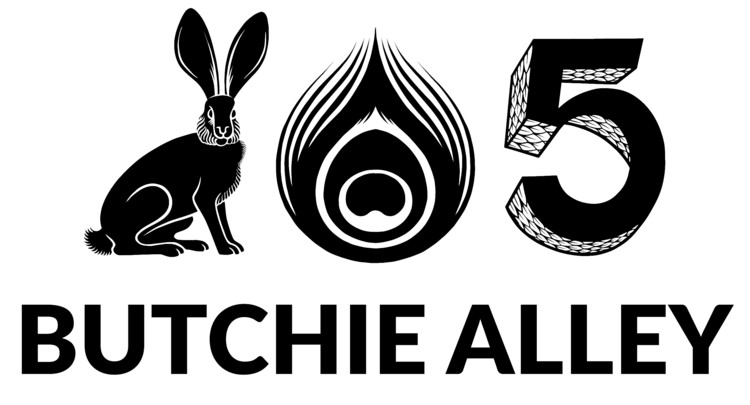I first discovered the work of Ahmed Salvador and Scott McMahon several years ago. I was visiting the previous location of the marvelous Bridgette Mayer Gallery in Philadelphia, and stumbled upon an installation in a tiny closet cubby space featuring images created by the light emitted by fireflies. It was like taking a deep breath in a cocoon of wonder. The experience still stays with me.
Years later, I got to meet Ahmed Salvador while he was expertly installing my fragile ceramic work at The Philadelphia International airport. It is no surprise that someone who cares so intently for the art works of hundreds of artists would make thoughtful and captivating pieces. I became more acquainted with the collaborative work developed with Scott McMahon and began planning an opportunity to work with them.
Invisible Dynasty at No. 5 Butchie Alley is an immersive experience. McMahon/Salvador create images using film photography. They manipulate chemical processes, employ acts of chance that violently expose the film and mail the canisters back and forth. It is a process of perpetual motion. In many of the images the sprocket holes of the film are featured as part of the work, making it known that this is not a digital activity. The photographs are more object-like in their occupation. More like an etching or multi-media painting, they are portals that draw the viewer in for closer inspection, wondering how each intimate universe was created.
Please join us for an Artist discussion beginning at 5:30 p.m., followed by the opening reception on Saturday, May 4th from 6-9 p.m. at No. 5 Butchie Alley. The exhibition runs through June 15th. Gallery hours are Saturday and Sunday 12-4 p.m. and by appointment.
Pictured above: A tree was photographed for an entire roll of film. The roll was mailed. The recipient froze the film, baked it, froze it again, then dried it by using a blowtorch.
Inkjet print from 35mm color negative film. 2021
W 21.5 x H 11.5”
AVAILABLE WORKS
All works $300.00 - Inquire about vinyl wall pieces.

















